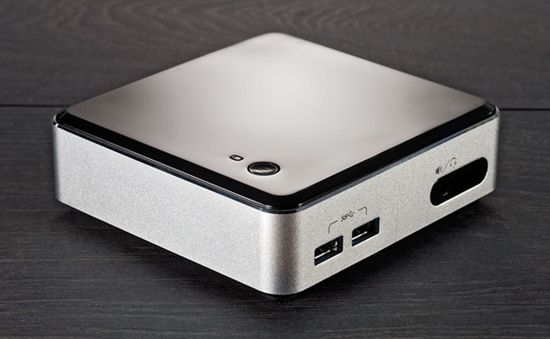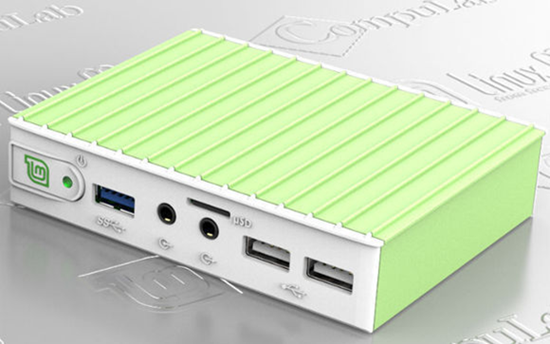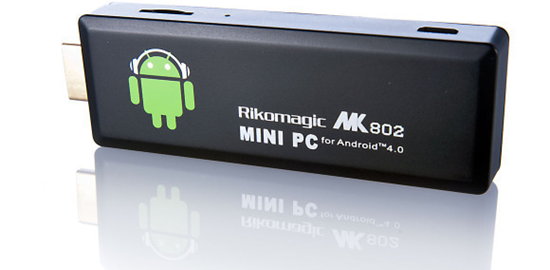
Mini PC invasion: 10 radically tiny computers that fit in the palm of your hand
By Brad Chacos, PC World, 17 April 2015.
By Brad Chacos, PC World, 17 April 2015.
Some of today’s desktops can make even the sleekest of laptops seem downright bulky.
Computers have been shrinking in stature for years, and the revolution has only accelerated in recent times. As chipmakers focus on creating processors that sip little power without sacrificing performance, thermal concerns have largely been alleviated in modern CPUs. Because of that, today’s pint-sized PCs offer enough performance to play HD video and satisfy Office jockeys, the opposite of the janky, compromised experience of yesteryear’s microcomputers.
From PCs-on-a-stick to discreet boxes no larger than a deck of cards, let’s take a look at the wide range of computers available that can fit in the palm of your hand - the ultra-portables - starting with the one that embedded teeny-tiny PCs in the public eye.
1. Raspberry Pi
The Raspberry Pi receives accolades for kicking off the maker revolution, but it also thrust the idea of tiny computers into the limelight. The Pi certainly doesn’t look like a traditional PC: It’s an open board powered by components usually found in smartphones, not computers, and it even draws power via a Micro-USB connection - just like mobile devices.
Don’t let that fool you though. The Raspberry Pi is a real computer with real (albeit lightweight) computing chops. It can run several varieties of Linux, and the Broadcom VideoCore IV GPU is powerful enough to output 1080p video without a hitch, making this US$35 mini-PC a viable home theatre PC option. (Pro tip: Use OpenELEC.) Best of all, the recently released Raspberry Pi 2 runs circles around the original while sticking to the same US$35 price point.
2. Intel NUC
On the other side of the puny PC coin is Intel’s Next Unit of Computing, a polished, premium product that delivers full-blown desktop performance - albeit for a price often 10-times higher (or more) than the Raspberry Pi’s cost.
NUCs use full-blown Intel Core processors inside their seriously sleek cases, which gives them abundant bite when it comes to computing. Actual performance metrics vary, however, depending on how you outfit your rig. Intel’s NUCs - and its Gigabyte Brix cousins - are bare-bones PCs, meaning you’ll have to bring your own storage, memory, and operating system to the party.
Make no mistake: All told, you pay a premium for Intel’s NUC. But damn if it isn’t nice.
3. Asus Chromebox
What, pricey Windows machines aren’t your thing? Check out the Asus Chromebox, the desktop equivalent of a Chromebook. At 4.88x4.88x1.65 inches, it’s slightly larger than the NUCs and Brixes of the world, but still svelte enough to fit in your hand.
Don’t scoff about Chrome OS, either. Google’s operating system is surprisingly potent despite lacking compatibility with Windows software - and at US$160 for the base model, the price of the Asus Chromebox is certainly right.
4. HP Stream Mini PC
If the Chromebox’s lack of software support trips you up, fear not: HP’s Stream Mini PC costs just US$180 and runs Windows 8.1 with Bing, which is basically Windows 8.1 with Bing selected as the primary search engine.
This is a tempting little box, but be aware: You still won’t be able to run ultra-demanding programs very well on the Stream Mini PC, because it only packs a modest Intel Celeron 2957U processor, 2GB of memory, and a 32GB M.2 SSD. Plus, at 5.73x5.70x2.06 inches, it’s the largest tiny computer in this roundup.
5. Mintbox Mini
But we can get even smaller!
The sleek Mintbox Mini squeaks in at just 0.95-inch tall and is a whopping five times smaller than the original Mintbox mini PC. This computer’s distinctive not only for its tiny size, but also because it runs Linux Mint out of the box. With an AMD A4 6400T processor packing Radeon R3 graphics, 4GB of RAM, and 64GB of solid state storage, the Mintbox Mini should be able to handle basic web browsing, video playback, and productivity suite tasks just fine.
Even better? Between the SSD and the passive cooling for the processor, this pint-sized PC runs utterly silent.
6. Vensmile iPC002 Wintel Mini PC
You may not have heard of Vensmile (it’s a maker of cheap Chinese PCs) but its iPC002 Wintel Mini PC still catches the eye. This sleek computer is far smaller than a DVD case at 5.82x3.11x0.36 inches, but it’s still a full-blown PC powered by Windows 8.1 with Bing.
Vensmile’s computer packs a quad-core Intel Atom Bay Trail CRZ3735F processor, paired with 2GB of RAM and a 32GB eMMC hard drive. Don’t expect the performance to blow you away, but this hands-on video shows the iPC002 Wintel Mini PC performing basic computing tasks without issue. It’s powered via Micro-USB, just like the Raspberry Pi, and plays nice with both Bluetooth and 802.11n Wi-Fi, theoretically making the device a capable travel companion.
7. Zotac Zbox Pico
But we’re not done yet. We can still get smaller.
Zotac’s US$169 Zbox Pico packs a component configuration similar to Vensmile’s computer, but squeezes the hardware into even tighter quarters, with a case measuring a mere 4.6x2.6x0.8 inches. This fanless, sub-US$200 Windows PC runs utterly silent and it’s small enough to slip into your pocket - unless, perhaps, you’re a skinny jeans aficionado.
8. Intel Compute Stick
You’d be hard-pressed to find a desktop PC much smaller than the Raspberry Pi or Zotac Zbox Pico. But forget traditional desktops! Advances in technology have shrunk computers so much that they’re now available in Chromecast-like stick form, ready to turn any TV or monitor into a working PC. Just plug it into your display’s HDMI port, connect to USB for power, and you’re ready to rock - though you’ll obviously need a (preferably Bluetooth) keyboard and mouse as well.
Intel’s Compute Stick, revealed at CES 2015 , is a PC-on-a-stick generating a ton of excitement, and it’s easy to see why. At its heart, the Compute Stick packs similar internals to the Zotac and Vensmile machines in an even more portable form. Intel’s mini PC is available for US$150 for a Windows-powered version, while a Linux variant with 1GB of RAM and 8GB of storage will set you back US$110. I recommend spending the extra US$40 for the beefed-up tech specs even if you're interested in running Linux.
9. Android-on-a-stick
Stick-based computing is nothing new in the world of Android, however. I reviewed Rikomagic’s Android 4.0-based MK802 II micro PC more than two years ago, and the market has only expanded since then. There are a slew of Android-PC-on-a-stick devices available today, sporting the same basic design principles as Intel’s Compute Stick and all costing far less than US$100.
Given the HDMI-centric design of these devices and the Play Store’s vast entertainment app library, Android sticks can excel as basic home theatre PCs, adding streaming capabilities to televisions that lack Internet connectivity.
10. Your phone
Speaking of Android, today’s modern smartphones - including iPhones - have more in common with an ultra-portable computer than the landlines of old. The mature app ecosystems of both the App Store and the Play Store are more than capable of handling your basic computing needs, from productivity to entertainment to web browsing. No joke.
With a dock and some external peripherals, you can even turn your phone into a basic desktop PC for cheap - though it can take some time to get accustomed to navigating a touch-centric interface with a keyboard and mouse. If you decide to give it a whirl, PC World’s guide to 13 highly productive Android apps that play nice with your PC can help you integrate your phone with your general computing lifestyle.










No comments:
Post a Comment
Please adhere to proper blog etiquette when posting your comments. This blog owner will exercise his absolution discretion in allowing or rejecting any comments that are deemed seditious, defamatory, libelous, racist, vulgar, insulting, and other remarks that exhibit similar characteristics. If you insist on using anonymous comments, please write your name or other IDs at the end of your message.